- About Us
- Our Work
- Tree Info
- Get Involved
- Blog
- Support Us
By Canopy Team on October 17, 2016
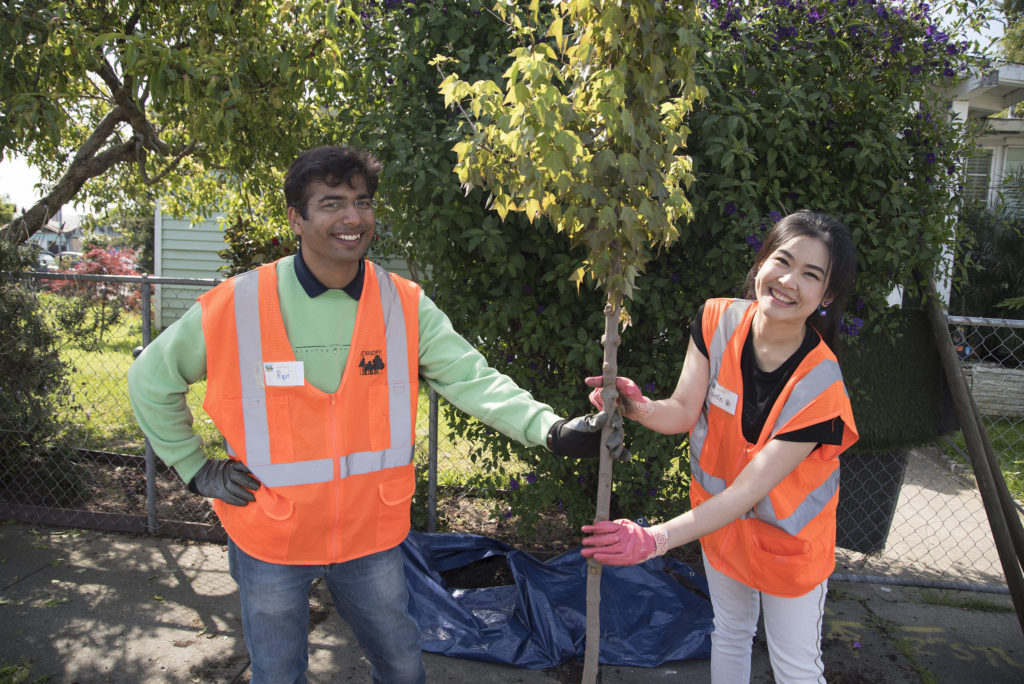
At Canopy, we’re pretty proud of our tree-planting track record.
Thanks to our rigorous planting protocols (and our awesome volunteers!), trees planted by Canopy have exceptional rates of establishment and survival. If you’re getting ready to plant a new tree, we recommend these 8 proven steps to ensure a happy, healthy, and long-lived tree.
But first! Before planting…
Before you reach for your shovel, carefully consider tree selection, placement, and site conditions. The foundation for a healthy, long-lived tree is planting the right in the right place. Consult the Canopy Tree Library for tree suggestions and requirements, and feel free to contact us with questions.
And remember: our optimal planting season in the Bay Area is when the weather is wet and cool, from late-October to mid-March.
Alright, now it’s time to plant.
First, remove the tree container from the container and measure the root ball (the mass of soil and roots that comes out of the container) with the handle of your shovel to estimate the depth to dig. Dig the hole as deep as, and 2-3 times as wide as the root ball. It is very important that the root flare (the point where trunk widens and becomes roots) remains above the surface of the soil. To prevent air pockets below the tree, create a small mound of soil in the base of the hole and tamp down (press firmly but do not over-compact the soil) to prevent the tree from settling.

We have found that this step is key to robust tree performance. Roots should ideally radiate out straight from the center of the root ball. Lay the tree on its side with the root ball on a tarp and work gloved fingers in deeply to loosen and free the roots. Cut off any circling roots to prevent girdling (when circling roots get bigger, grow around the base of the tree and cut-off the flow of water and nutrients to other parts of the tree). This is a good time to cut the green ties and remove the nursery stake.

The tree has only one chance to be planted properly so make sure the depth and position is correct before filling in the soil. The root flare should lie above the surface. If it is too low or too high, lift the tree out and add or remove soil as needed. Rotate the tree until you find the best placement to keep major branches away from walkways or buildings. Hold the tree upright and fill in with soil around the root ball. Gently tamp down soil around the root ball with a shovel or the toe of your shoe to eliminate large air pockets. Do not step directly on the root ball, as this will damage and compact the roots.
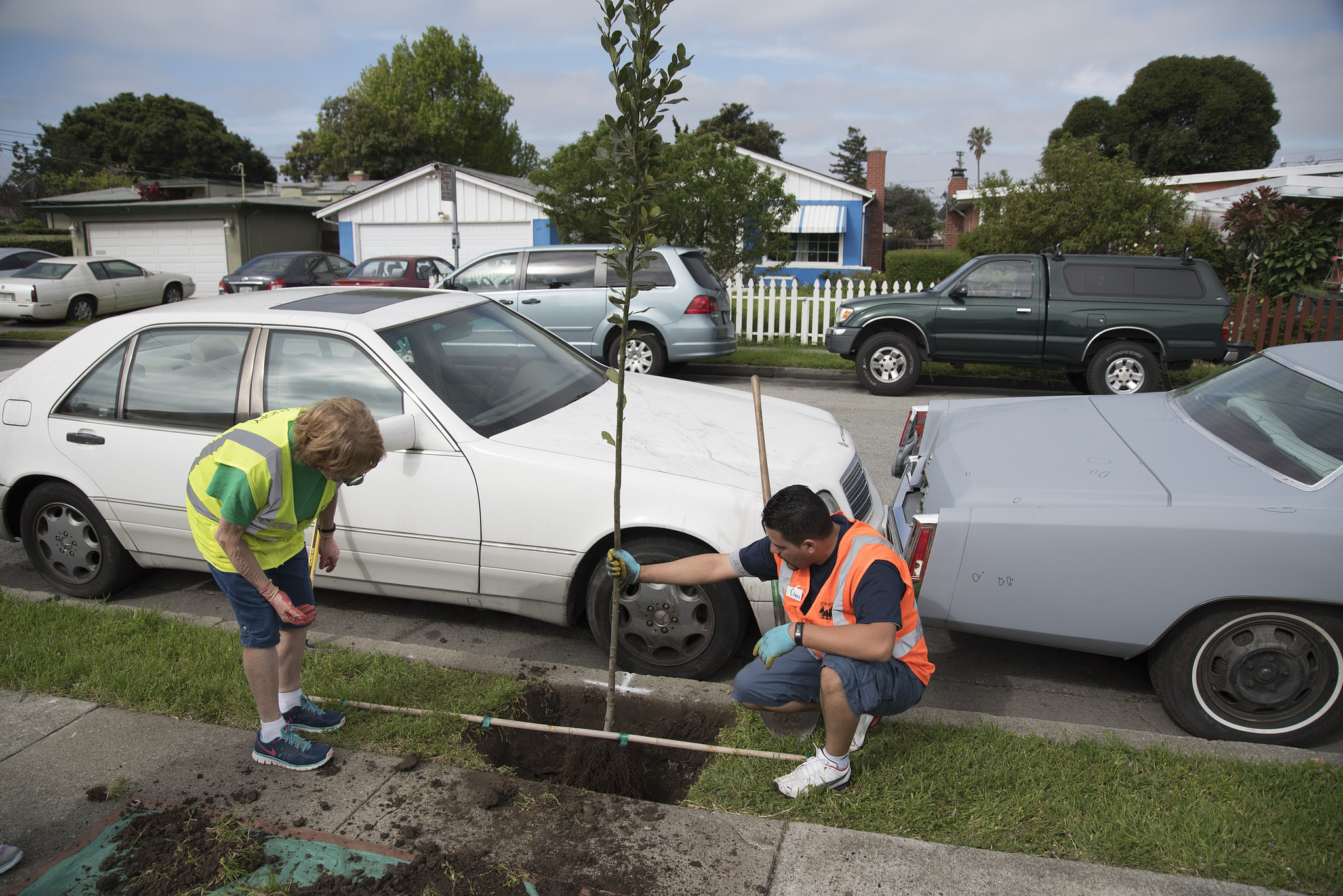
A soil berm is a mound encircling the tree, 10-12 inches from the trunk, which creates a basin or bowl that will hold approximately 10 gallons of water. The inside of the berm should be at the outer edge of the root ball. Keeping the root ball moist is essential until the tree is established.
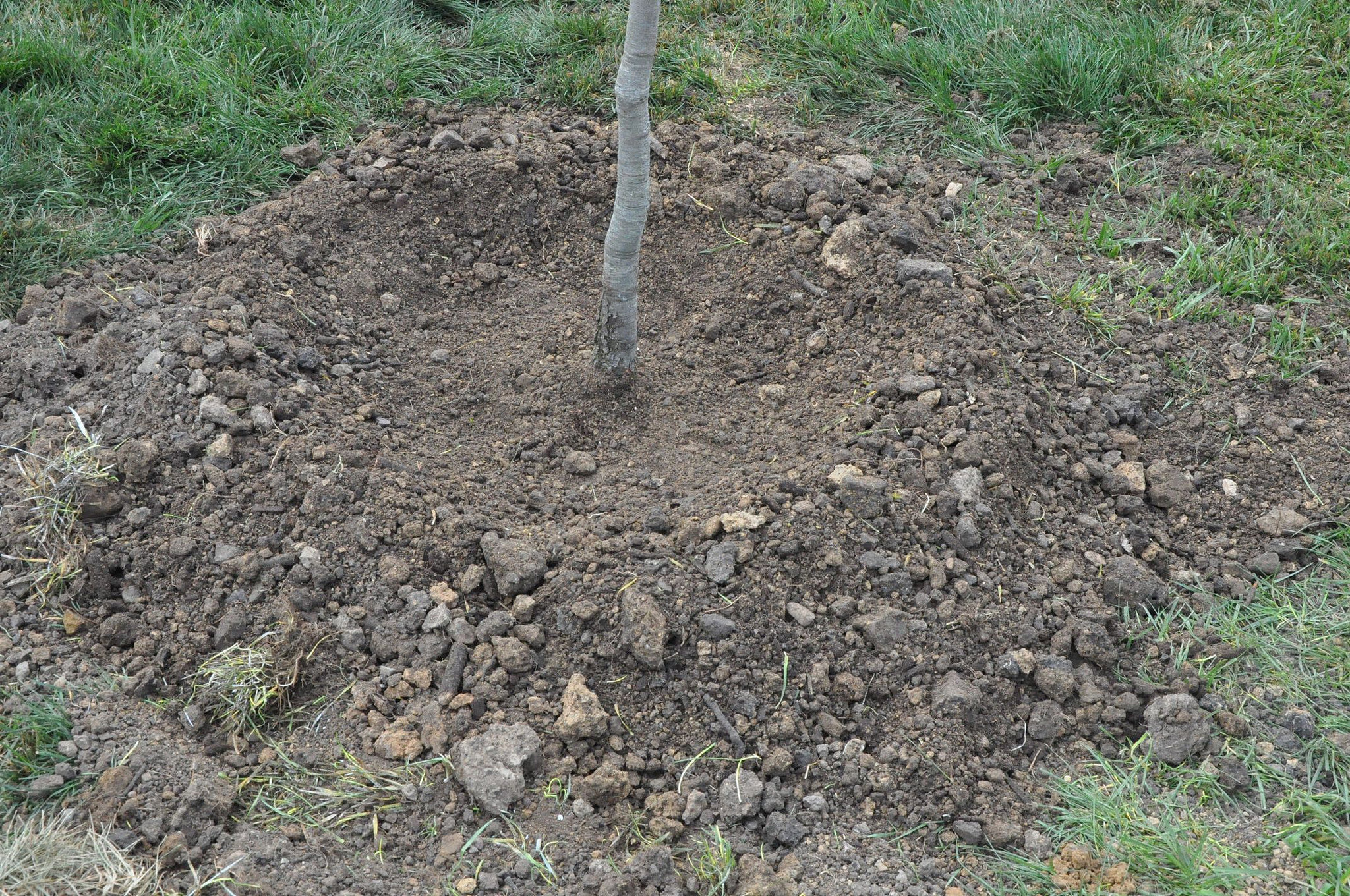
Two ‘lodge pole’ stakes are used to help the young tree grow up straight until the roots are established. In parks and yards three stakes may be used to protect the tree from lawn mowers. Place the point of the stake firmly on the ground, 8 inches away from the trunk and hold straight. Lean the top of the stake over to easily slide the stake pounder onto the stake. Always wear a hard hat while using the stake pounder (a very heavy tool with two handles which fits over the end of the stake). Pound until the stake is firmly set and the pounder can easily be removed. Use extreme caution when removing the pounder from the stake. Repeat with the second or third stake spaced equally around the tree.

Ties should be placed at the lowest point on the trunk where the tree can be held straight, generally about 4 feet from the ground. Hold the trunk at the level you plan to tie it; the tree should stand straight without leaning. Create a figure 8 pattern with the tie, one loop around the trunk and the other around the tree. Nail the ends of the tie together into the stake.
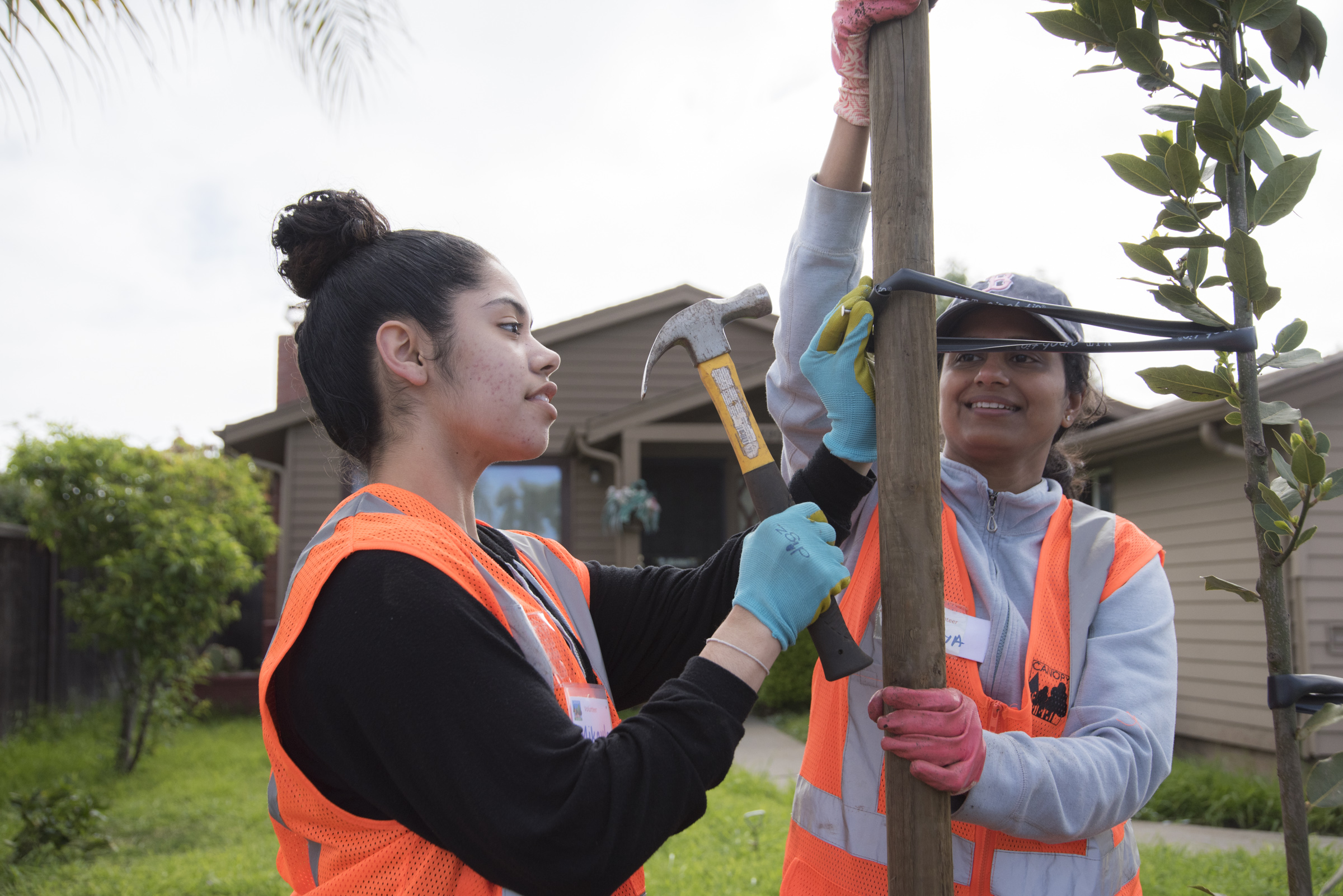
Fill the basin with water and reinforce the berm if needed. Continue watering (once a week when there has not been a soaking rain) until established.
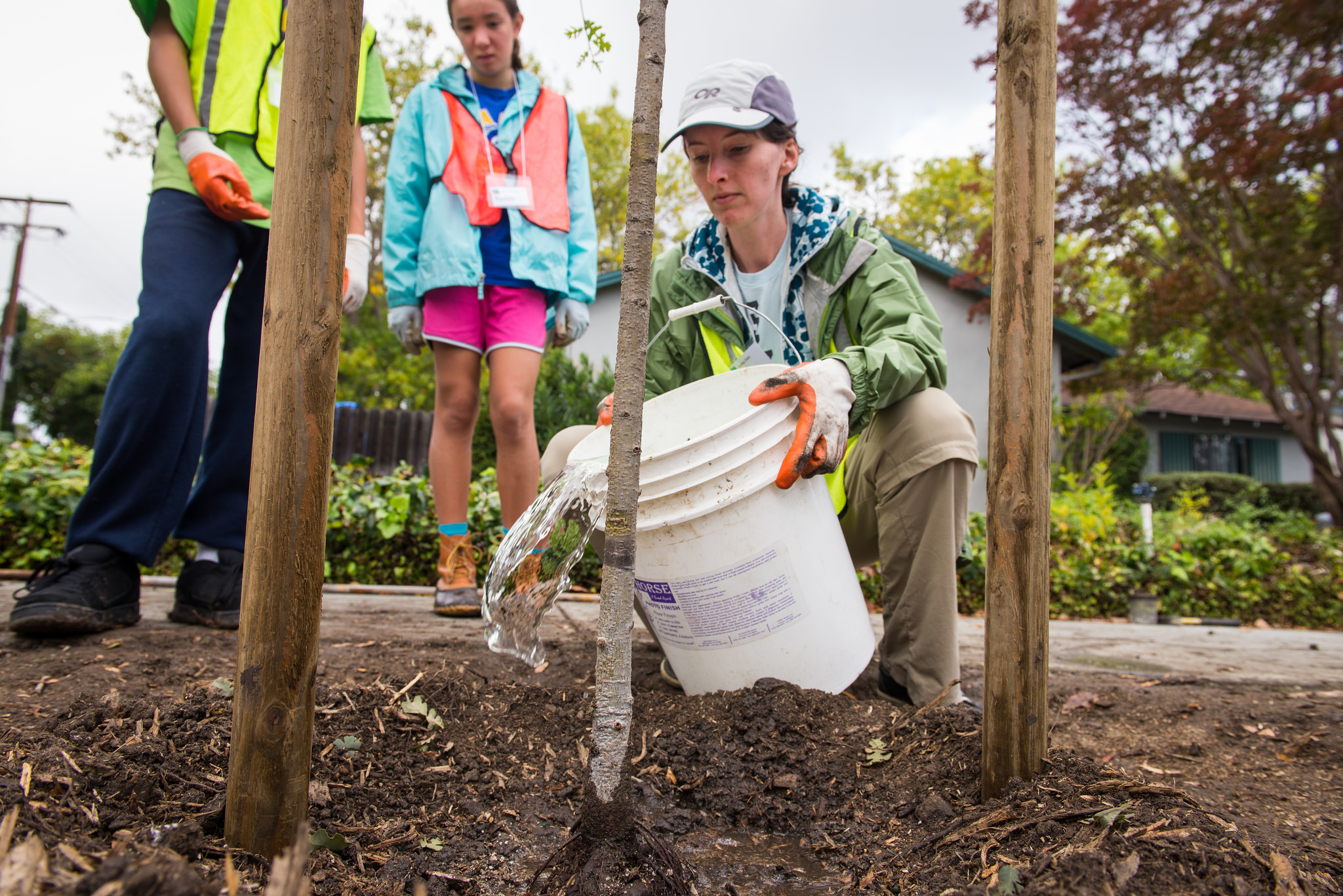
Cover the soil 2-3 feet around the tree base with 3-5 inches of mulch (composed of wood chips, shredded bark or leaves) to retain moisture, suppress weeds and improve soil composition. Keep mulch 2-3 inches from the trunk and root flare of the tree to prevent insects and rodents from burrowing in the mulch and chewing on the bark.

Click here for details on caring for your young tree and water guidelines.
You can download Canopy’s illustrated Tree Planting Pocket Guide here.
Canopy’s step-by-step tree planting video: